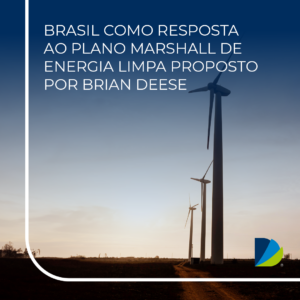Brazil was one of more than 100 countries that signed two documents in which they commit to halt deforestation and reduce methane emissions by 30% by 2030 , at COP 26 in Glasgow, Scotland. The country is placed among the five countries that emit the most greenhouse gases on the planet, including one of the most harmful to the global climate: methane. And more than 71% of these gases, in Brazil, are produced by livestock – one of the flagships of Brazilian exports.
Even before the signing of the agreements, Brazil had already been working, through the Empresa Brasileira de Pesquisa Brasileira (Embrapa), on ways to reduce the production of methane in livestock, which occurs mainly in the digestive tract of cattle and is expelled through the nostrils and mouth of the animal.
Embrapa researchers have been studying to combat this problem by feeding the cattle, encouraging a more nutritious diet, with grass, grains, rations enriched with corn, soy and even algae, reducing fermentation in the animals' digestive tract and, consequently, the methane gas emission.
“It is important that we always improve animal nutrition because this will contribute in two ways to methane emissions in particular. A better quality food, it is more digestible, digests better and emits less methane because of it. And as it is a more nutritious food, it also allows the production cycle to be shortened, preventing the animal from emitting gases while it is not growing, for example”, researcher Alexandre Berndt recently told Rede Globo .
However, the company has other lines of research to solve this problem. In a bulletin from Embrapa 's Beef Intelligence Center (CiCarne), Sérgio Raposo de Medeiros, a researcher in Animal Nutrition at Embrapa Pecuária Sudeste, describes a study with the use of additives in livestock feed. According to the study, there is good potential to reduce CH4 emissions, while increasing efficiency in the conversion of feed into weight gain and, therefore, in the profitability of the activity.
“Additives that alter rumen biota can reduce methane production. Ionophores are the most commonly used additives for this purpose, having been used for over 40 years in Brazil and worldwide,” says the newsletter.
It so happens that, according to the bulletin, there is a growing reluctance on the part of society with the use of antibiotic additives, such as ionophores and virginiamycin, due to the risk of cross-resistance. And Brazilian legislation does not allow the use of two or more antibiotics. The European Community, for example, does not accept the use of antibiotics as food additives, although the preventive use in defense of the animal's health is authorized.
new studies
At the same time as he assures that the Brazilian legislation has not changed, regarding the use of antibiotic additives, Medeiros informed DEEP that, still this Friday (11/02), in a doctoral committee of the FZEA/USP, studies were presented in which three additives were tested in association.
“One was an antibiotic (monensin), the other was a mixture of essential oils, and the third was enzymes. No emission reduction was achieved, but it is good to remember that this is just one study and that the results are varied. Ionophores, such as monensin and others, which are antibiotics, have the most robust reduction results, that is, they are effective in most situations, but there are studies that show that the effect does not persist over time”, described the researcher.
The compensation alternative
Even with the solutions proposed to reduce methane emissions from livestock, they are not enough to bring gas emissions to zero. In this sense, Embrapa proposes that unavoidable methane emissions be offset by reducing carbon emissions, through the integrated systems Crop, Livestock and Forestry (LPF) to contribute to the goals of Low Carbon Agriculture (ABC), for example.
Weber Amaral, PhD from Harvard University and professor at Esalq at the University of São Paulo and advisor to DEEP, warns that the issue of emissions in agriculture is extremely complex, as it is multifactorial.
“The first thing that needs to be understood is changes in land use, an issue associated with deforestation. Tackling land use, which can be a huge reservoir of CO2, but it can also be a giant source. Soil carbon variations can be from 2 ton to 30 ton. What causes this amplitude is the nutrition of the soil, vegetation cover, the management given to the soil”.
In this aspect, Weber highlights the work of Embrapa, which coordinates a network that demonstrates that LPF integration contributes to fixing carbon in the soil.
“In short,” says Amaral, “Brazil signed a protocol in Glasgow, in which it commits to methane emissions. So you need to measure. On the other hand, the market is thirsty for good carbon projects and most of the low-cost projects come from agribusiness”.
The professor highlights the opportunity for there to be a concerted action by Embrapa, companies like DEEP, research organizations, companies, in the sense that this opportunity does not fall into a vacuum.
“We need to bring transparency, compliance , comparability, which can only be achieved with good ESG metrics”, he concludes.
DEEP ESG continues to monitor the progress of these researches and will return to the subject shortly. Follow up!
Additional sources:
https://www.fao.org/gleam/results/en/
https://www.ucdavis.edu/food/news/making-cattle-more-sustainable









